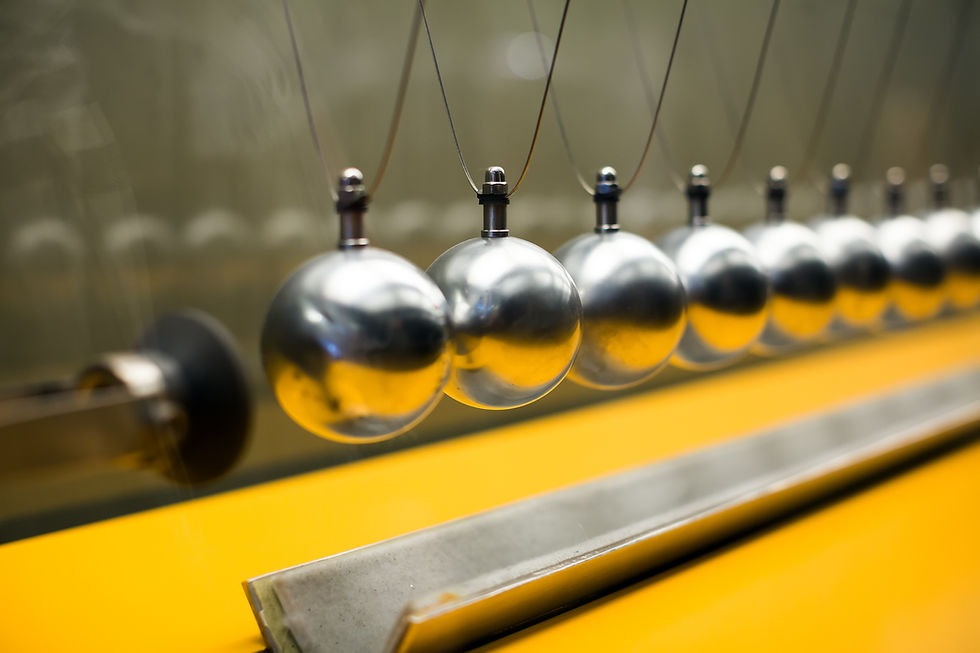Is Reproduction Possible Without a Living Womb?
- Sandy Woon
- Mar 19, 2021
- 3 min read
Updated: Mar 23, 2021

People have always been taught that to have a child, there must be a living womb. However, scientists have recently grown mouse embryos in a mechanical womb. With this new scientific discovery, it may be one day applied to humans in which a female is not necessarily needed for the formation of a baby.
The embryos looked perfectly normal despite it not being developed in a female mouse, instead in an artificial embryo. Their organs were developing as expected, along with their limbs and circulatory and nervous systems. Furthermore, their hearts were beating at a normal rate of 170 beats per minute.
Dr. Jacob Hanna described removing embryos from the uteruses of mice at five days of gestation and growing them for six more days in the artificial wombs. At around six days, the embryos are halfway through their development; where full gestation is about 20 days long. In terms of human development, it would be a fetus. Dr. Hanna said he and his colleagues had taken fertilized eggs from the oviducts of female mice just after fertilization, which is day 0 of development, and had grown them in the artificial uterus for 11 days. He and his colleagues have grown more than 1000 embryos through this method.
Until recently, researchers were only able to fertilize eggs from mammals in the laboratory and grow them for only a short time. The embryos needed a living womb. “Placental mammals develop locked away in the uterus,” Dr. Tesar said. That prevented scientists from answering fundamental questions about the earliest stages of development. They wanted to be able to understand how a single cell, a fertilized egg, can make all of the specific cell types in the human body and grow into 40 trillion cells.
Previously, the only way to study the development of tissues and organs was to turn to species like worms, frogs and flies that do not require a uterus, or to remove embryos from the uteruses of experimental animals at varying times, which provided glimpses of development. Developing an artificial uterus allowed for a way to get inside the uterus and watch the development of these mammals.
Dr. Tesar had spent seven years developing a two-part system that included incubators, nutrients and a ventilation system. The mouse embryos were placed in glass vials inside incubators, where they floated in a special nutrient fluid. The vials would slowly rotate so that the embryos don’t become stuck to the glass walls, which would cause them to die, while the incubators keep them supplied with oxygen and carbon dioxide in the same concentrations that a female mouse would provide.
When the artificially grown embryos reached their 11-day mark, they were compared with the embryos of living mice, and it was found to be identical. At this stage, the embryos need a blood supply, which is the next obstacle for researchers to overcome – by either creating an artificial blood supply or an enhanced nutrient solution.
This could lead to researchers eventually creating an animal outside the normal processes of biology, without living in a female womb. But current international regulations prohibit studying human embryos beyond 14 days of fertilization. “I do understand the difficulties. I understand. You are entering the domain of abortions,” says Dr. Jacob Hanna. However, researchers already study five-day-old human embryos from IVF clinics, which are also destroyed in that process. “So I would advocate growing it until day 40 and then disposing of it,” says Hanna. “Instead of getting tissue from abortions, let’s take a blastocyst and grow it.”
These teams have managed to coax ordinary skin cells and stem cells to self-assemble into look-alike early human embryos, which they grew for about 10 days in the lab.
Several kinds of artificial models of embryos have been described before, but those described today are among the most complete, because they possess the cells needed to form a placenta. In the future, people might just be able to have babies without the use of a living womb.
Sources
Sample, Ian. “Scientists Form Human Cell Clumps That Act like Early-Stage Embryos.” The Guardian, 18 Mar. 2021, www.theguardian.com/science/2021/mar/17/scientists-form-human-cell-clumps-that-act-like-early-stage-embryos.



Comments